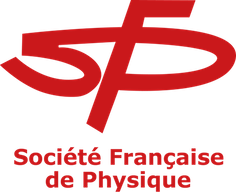Orateur
Description
Au cours des dernières décennies, les expériences neutrino auprès des réacteurs nucléaires ont fait progresser la connaissance des oscillations de neutrino, notamment avec une mesure précise de l’angle de mélange 13. Cependant, une anomalie concernant le flux d’antineutrinos émis par les réacteurs attend encore d’être résolue, le déficit observé nommé Reactor Antineutrino Anomaly (RAA) peut être expliqué par l’existence d’un état stérile du neutrino participant à l’oscillation. Les valeurs des paramètres d’oscillation expliquant au mieux la RAA sont sin2(2new) =0.14 et m241 =2.4 eV2 . L’expérience STEREO a été conçue dans le but de vérifier l’hypothèse d’oscillation vers un neutrino stérile. Elle mesure le flux et le spectre d’antineutrinos émis par le cœur compact du réacteur de recherche de l’institut Laue-Langevin à Grenoble. La cible, segmentée en 6 cellules, du détecteur placé à 10 m du cœur permet une mesure du spectre à différentes distances. Une oscillation vers un état stérile pourrait être détectée car elle induirait une distorsion différente du spectre en énergie dans chaque cellule. La prise de donnée ayant commencé à la fin de l’année 2016, la collaboration STEREO a publié ses premiers résultats en 2018 excluant une zone significative de l’espace des paramètres et rejetant les valeurs des paramètres préférés pour la RAA avec un intervalle de confiance à 99%.
During the last decades, reactor neutrino experiments allowed us to characterize the neutrino oscillations, in particular the mixing angle 13 has been precisely measured. However, a discrepancy between the antineutrino flux observed and expected, known as Reactor Antineutrino Anomaly (RAA), has yet to be solved. This anomaly could be due to the existence of a sterile neutrino state participating in the oscillation. The parameters value that best fit this oscillation are : sin2(2new) =0.14 and m2 41 =2.4 eV2 .
The STEREO experiment was designed to test this oscillation hypothesis, by measuring the flux and energy spectrum of antineutrinos emitted by the compact research reactor core of the Laue-Langevin institute (Grenoble, France).
The target, segmented in six cells and located at about 10 m from the reactor core, allows for a measurement of the energy spectrum at various baselines. The oscillation toward a sterile neutrino could be detected as it would distort each cell’s spectrum differently.
Ongoing data taking has begun in 2016. In 2018 the STEREO collaboration published its first results excluding a significant part of the parameter space and excluding the RAA best fit with a confidence level of 99%.

